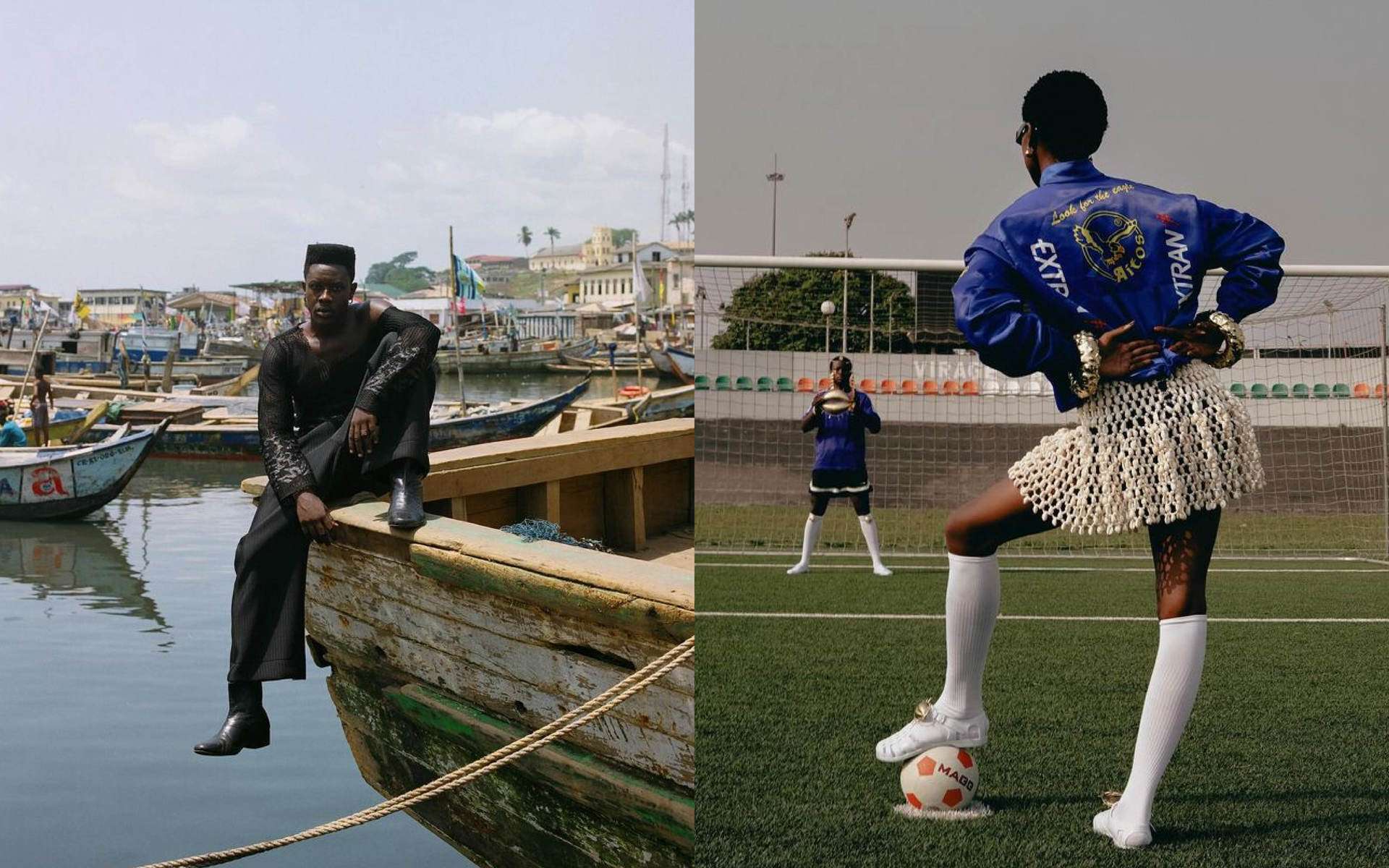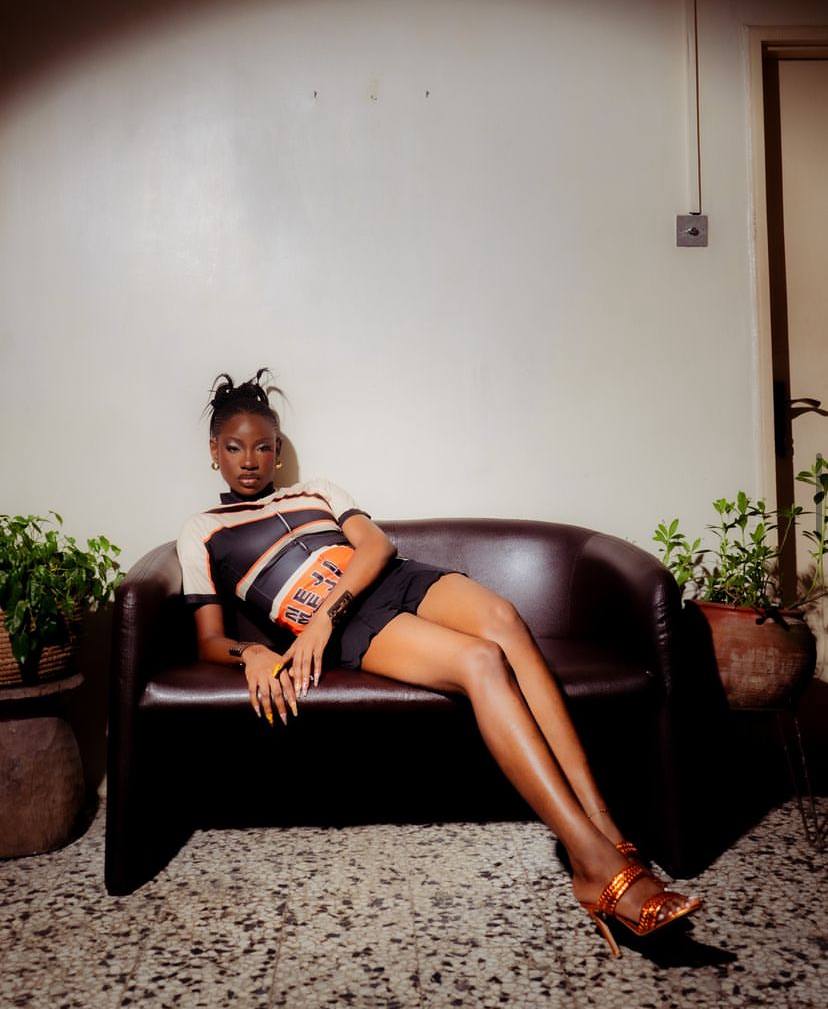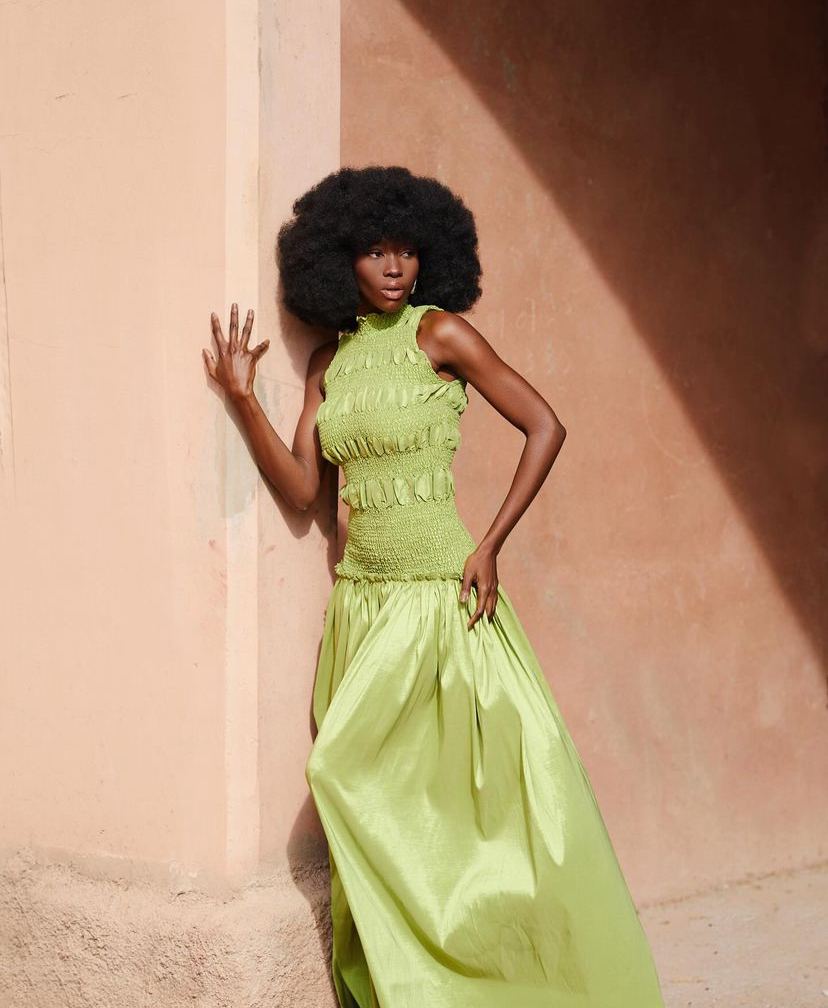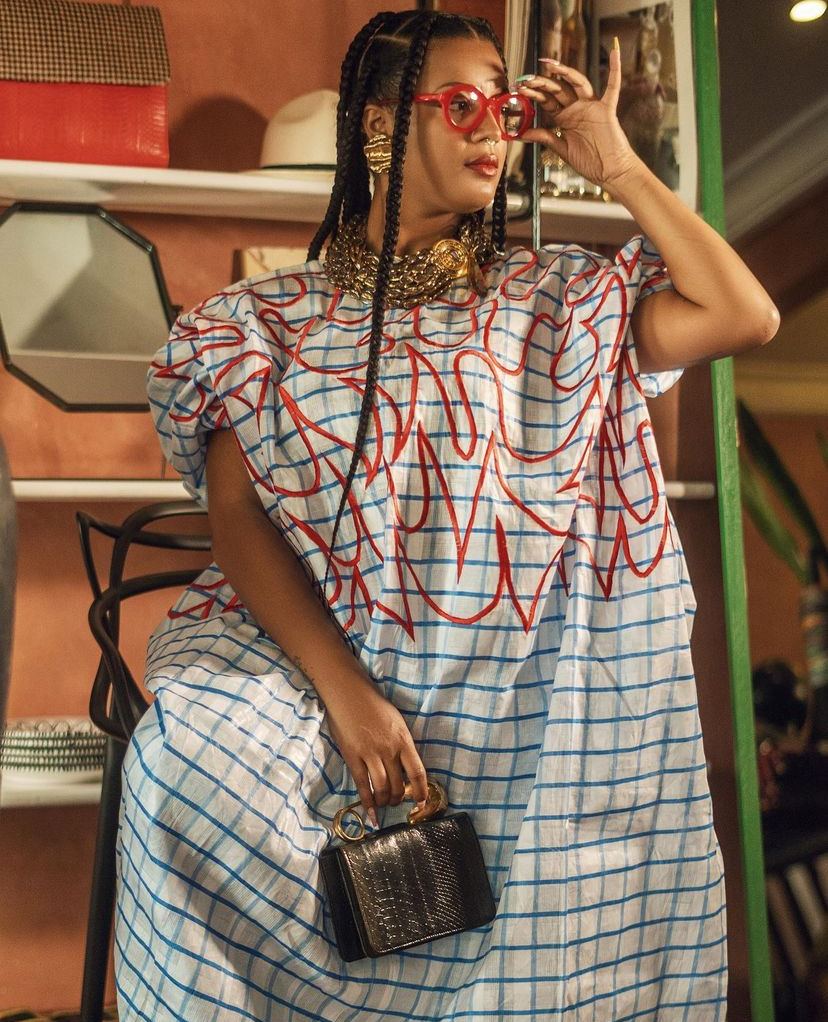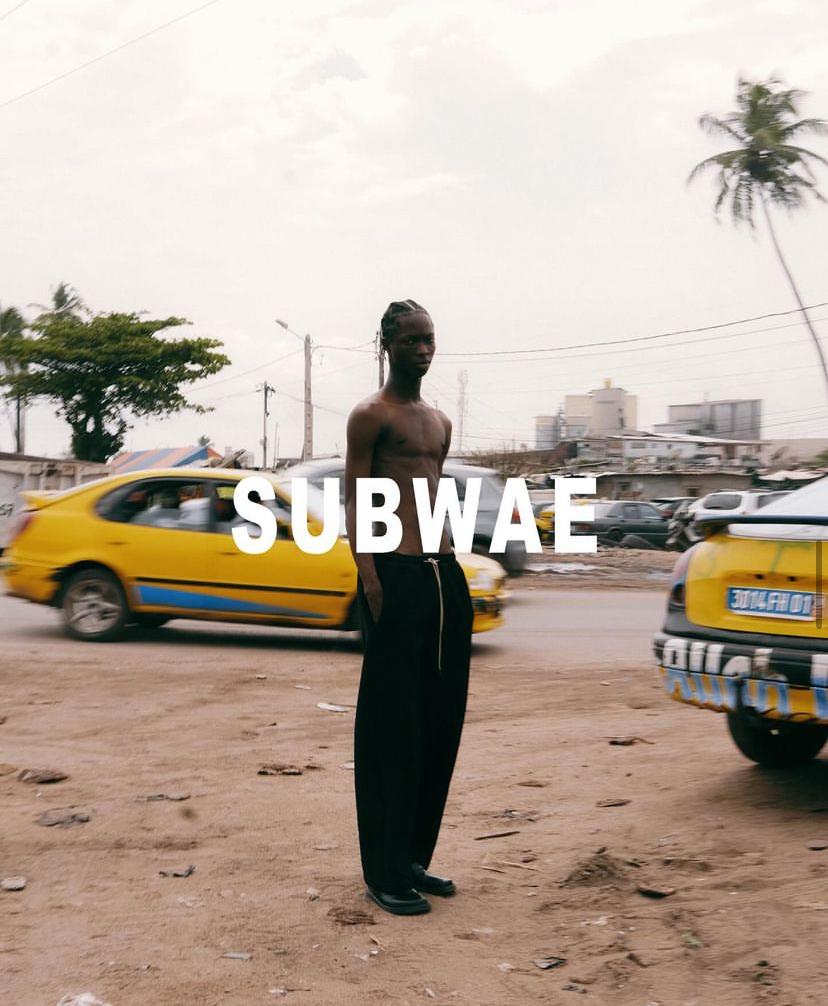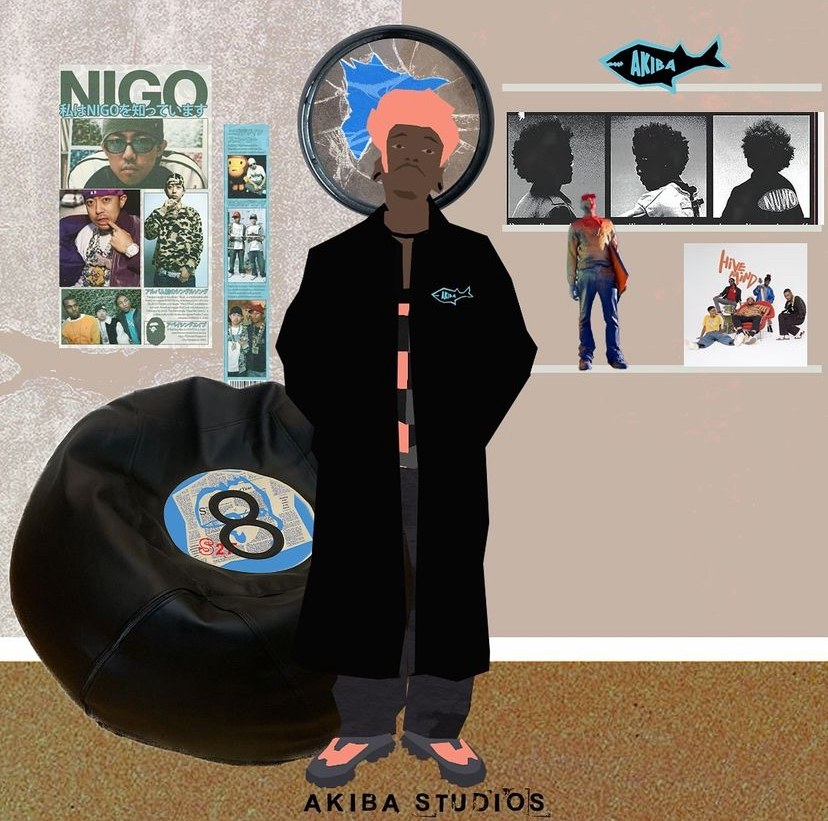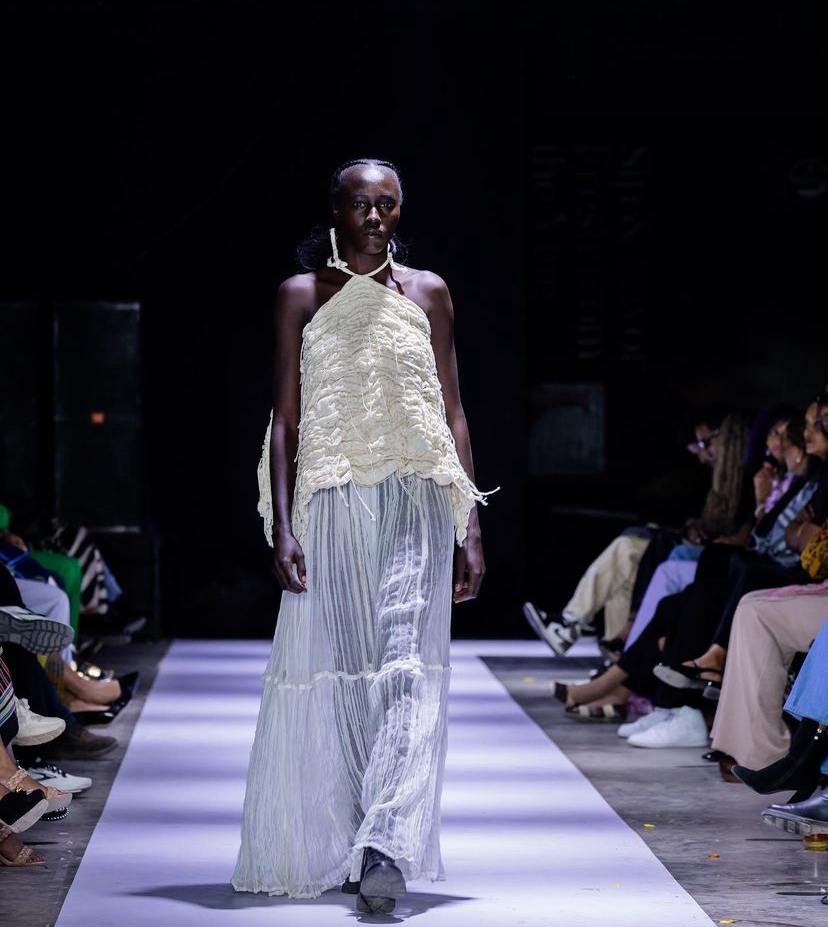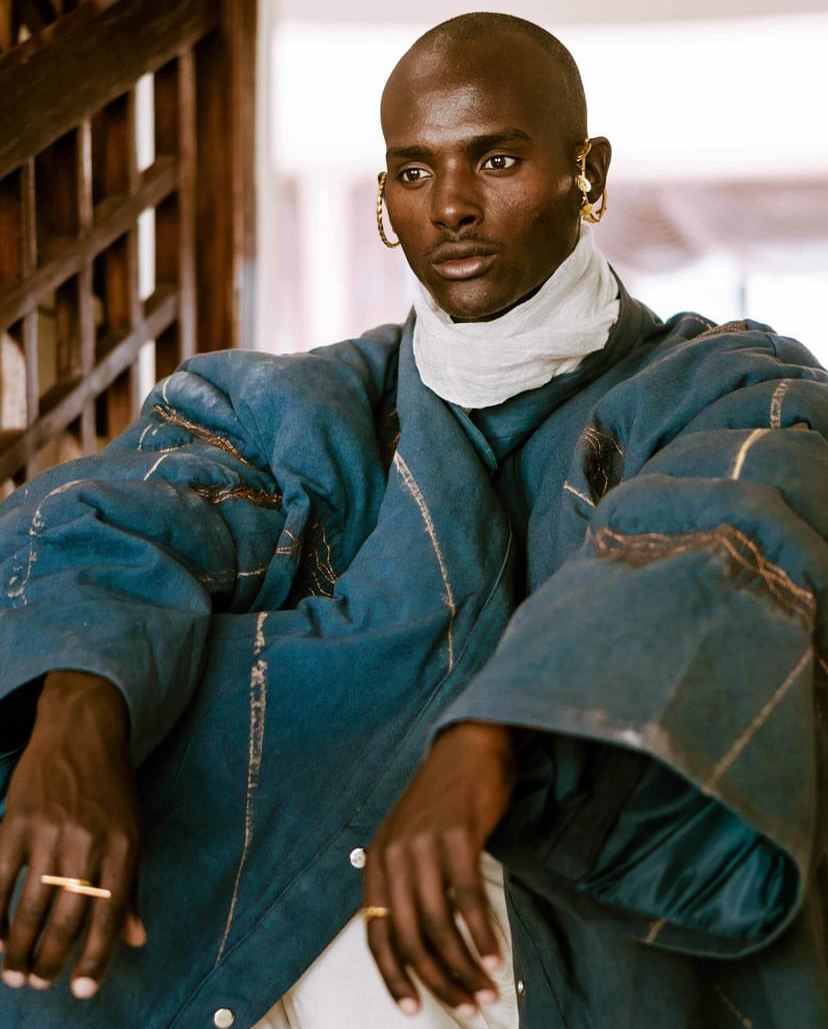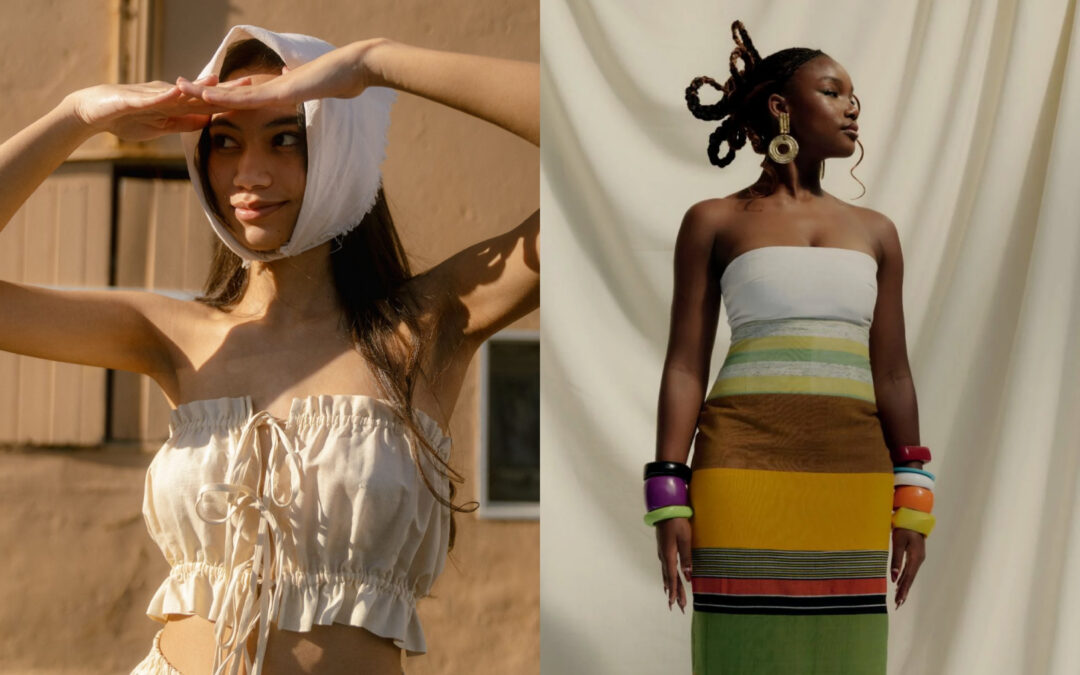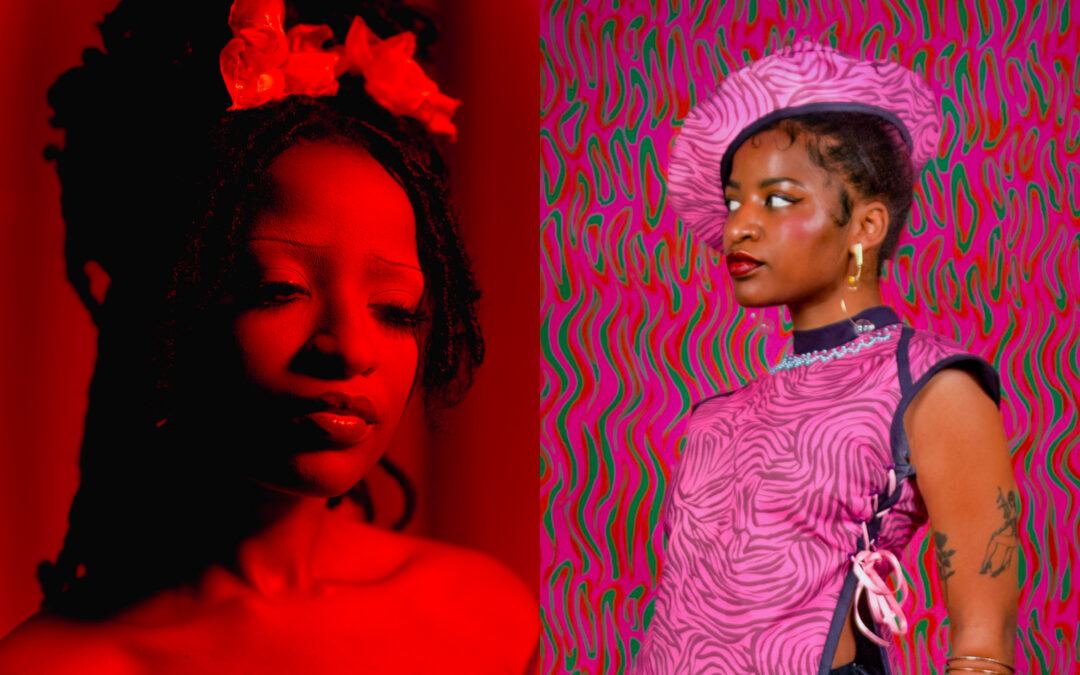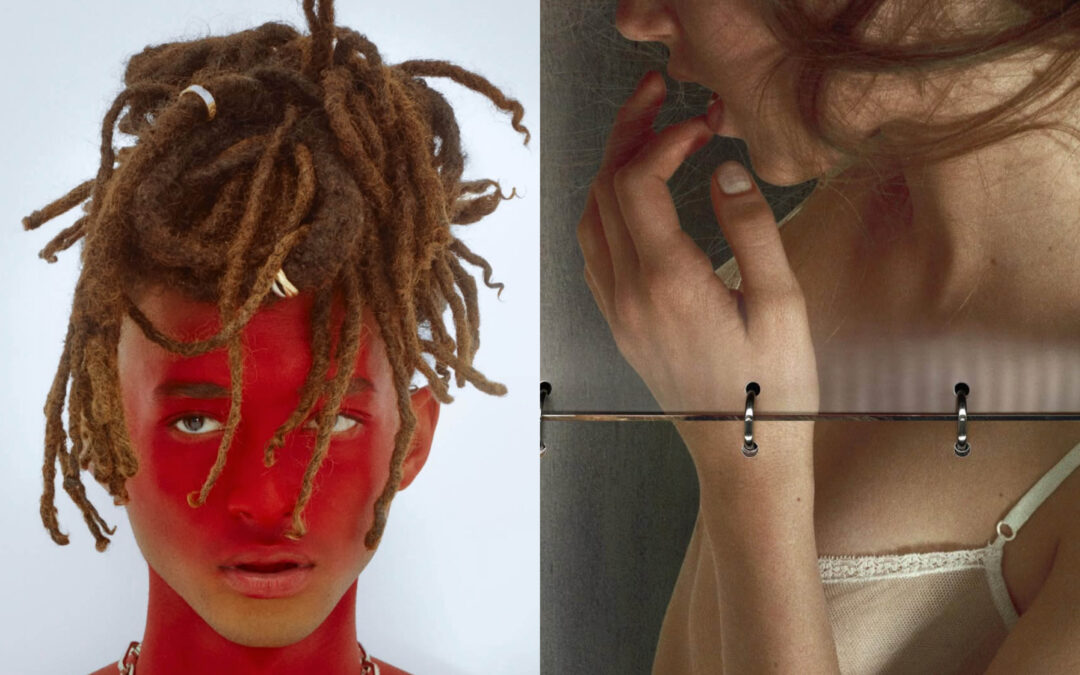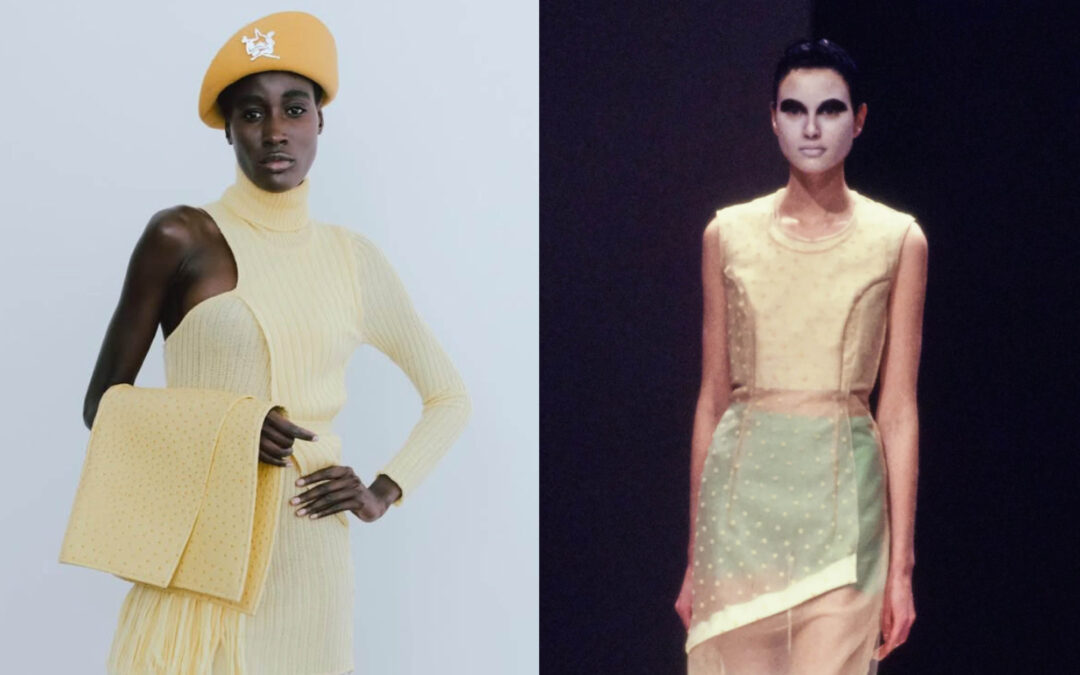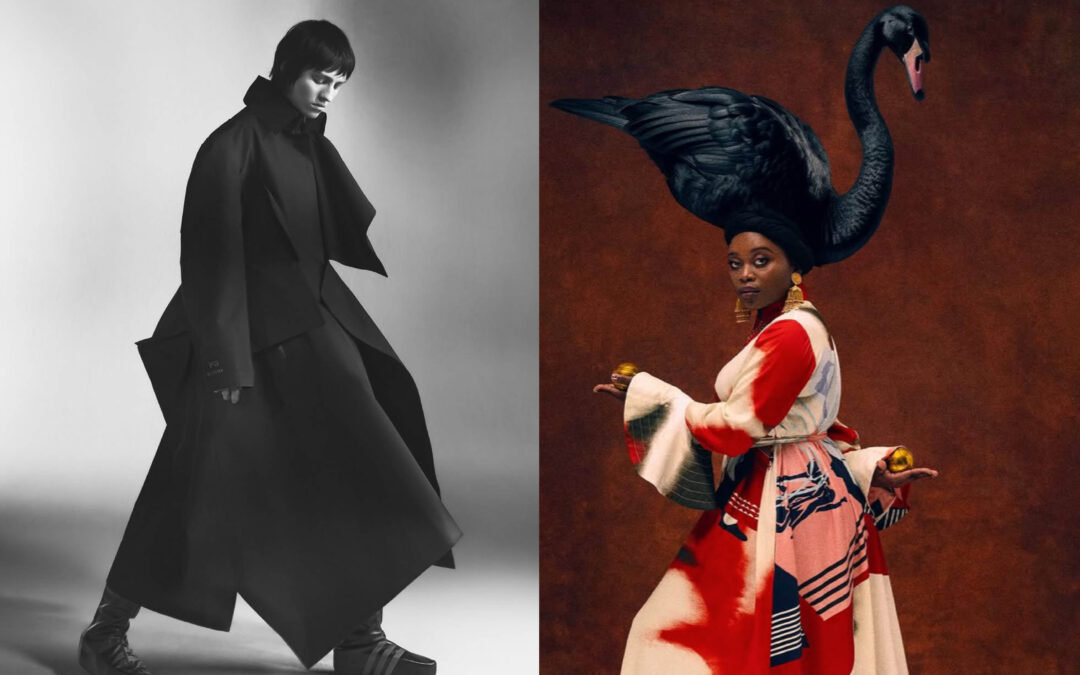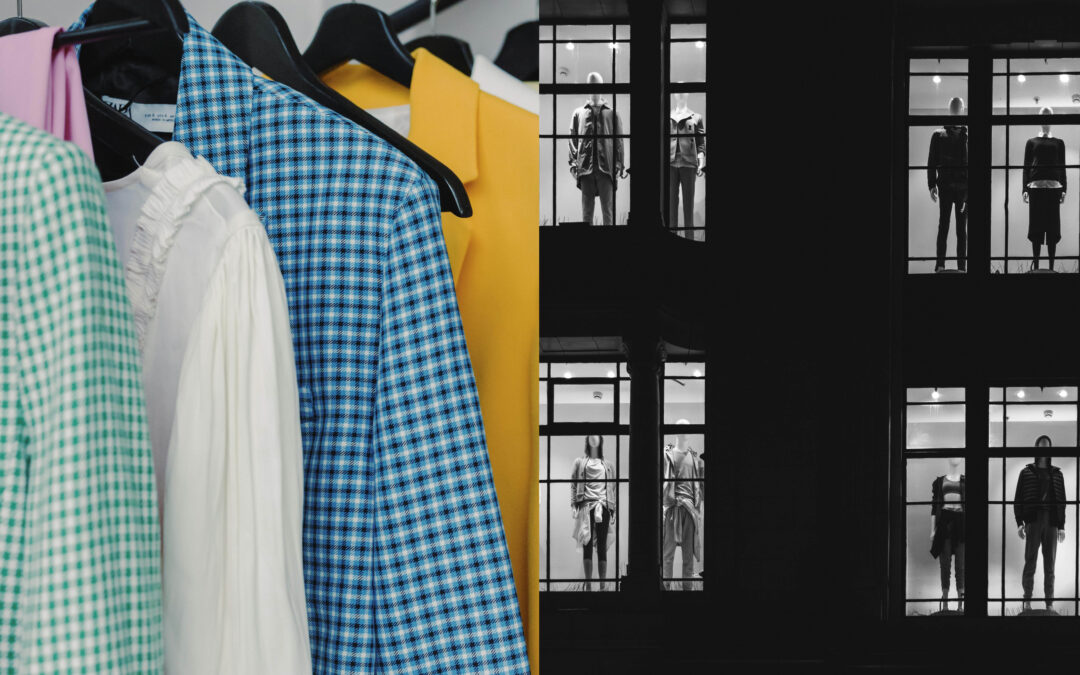Almost every fashion piece written on Africa (I am guilty of this too) always points toward the vastness and complexity of the continent — geographically and culturally. It can never be overstated though, especially since our literal perception of the landmass of Africa has been distorted through western map-making since the 16th century, a striking combination of colonialism and the big-map-industrial complex. The sartorial consciousness emanating from Africa is as ancient as we are, and yet it’s a totally new age for the continent’s fashion scene. To illustrate my point, I’ve selected some cities and respective designers who I think represent this new age so spectacularly — and I’ve organised each by ‘CITY FACTS’ and ‘FASHION HACKS’, offering you some notes to help you hack your way as you add each city to your ‘ones to watch’.
I’m not saying this chapter of Interlude is also doubling as my travel vision board for the next decade, but you wouldn’t be remiss for thinking this…I am truly, madly and deeply obsessed with Africa’s fashion renaissance, and the array of capital cities for our latest edition of Interlude.
You’ll note for each city from Lagos to Abidjan, Accra to Nairobi; that in its nuance and diversity, the depth of colour, composition and culture that punctuate each designer or brand is a direct reflection of their originating city and one thing is for sure; the continent is bursting with the mood and taste of Africa’s future.
Lagos, Nigeria
City Facts:
Lagos is the most populous city in Nigeria — a stunning melting pot of the country’s cultural diversity, the capital city is home to around 250 ethnic groups. Lagos itself is made up of several islands and a mainland area, with some of its major islands including Lagos Island, Victoria Island, and Ikoyi. Punctuated by an incredibly tropical climate, Lagos is also the land of Nollywood, Fela Kuti – Afrobeat – and well, the vibes on vibes, on v i b e s.
Fashion Hacks:
Lagos is the epicentre of Nigeria’s fashion scene, and as the sartorial heartland – it beams bright. From Omoyemi Akerele bolding launching Lagos Fashion Week in 2011, to Reni Folawiyo who founded Alára, West Africa’s first fashion luxury and lifestyle concept store, Lagoan fashion culture is marked by a strong and principal return to Nigeria’s sartorial traditions. Textile manufacturing, tailoring and cultural imprints were key facets to how Nigerians have dressed, and the rise of globalisation saw declines in these traditions. Now, fused with the contemporary visions of young designers and many entrepreneurs focused on building infrastructure and networks, Lagos has seen many designers and brands take the world by storm. From Orange Culture to Kenneth Ize, to Oríré, Tolu Oye’s Meji Meji and the indomitable spirit of Lagos Space Programme by Adeju Thompson – Omoyemi Akerele said it best in her conversation with System Magazine, that “to experience fashion is to experience culture. It means coming to Lagos and feeling the city’s confidence; its energy cannot be rivalled. The collections we show tell a story of how diverse and dynamic our culture is. They speak to historical references, resilience and grit. All the obstacles designers face daily, but they are still able to create, celebrate, and express who they are through their collections, season in, season out. It is about creativity and innovation, but it’s also about creating jobs through collaboration.”
Meji Meji photographed by Rete Poki via @mejimeji.co
Oríré’s Welcome Home Collection photographed by Bolaji Odukoya, via @orireofficial
Dakar, Senegal
City Facts:
Dakar’s location on the Cape Verde Peninsula, and as the westernmost city on the African mainland, is one of many reasons why Senegalese coastlines are experiencing a serious surfing revival. Home to one of Africa’s most important contemporary arts fairs, the renowned Dakar Biennale AKA Dak’Art is held every two years, and Dakar is an artist’s city, with the kaleidoscopic imprint of Senegalese culture creaching into every medium; from design, art, music, fashion and more. The birthplace of a uniquely Senegalese jazz fusion sound, Mbalax, popularised by the artist who always make me cry when I hear his voice – Youssou N’Dour — Dakar is extremely high on agenda of places to get lost in, whether in salty waves, lounging on a pirogue boat or eating traditional truly Dakari level fresh, fresh seafood. A girl can dream.
Fashion Hacks:
In 2022, Chanel made their first debut show ever on African soil – and it was Dakar that the couturier chose to consecrate this moment. The Métiers d’Art 2023 collection by Chanel celebrated craftsmanship through the work of specialised artisan workshops associated with the fashion house, and engaged in creative and cultural dialogue with Senegalese artists and institutions. Now, I’m not going to divulge my feelings on Western fashion houses showcasing African-inspired aesthetics…you can take a guess…but the point of this is, Dakar was the moment of moment’s for this show and for a very, very good reason. Whether it’s the effervescent eye of artist and designer Selly Raby Kane, or the ‘we’re not a concept store, we’re a mood store’ Le Sandanga by Khadija Ba, Senegalese women are at the forefront of the country’s sartorial vision, and there seems to be something innately psychedelic and enriched about Senagelse design philosophy — born from the country’s history, folklore, and traditional craftsmanship. Whether its age-old techniques such as weaving, dyeing, and embroidery, you will always see vibrant colour in almost every object, garment, architecture and so on. What could be more joyful?
Selly Raby Kane’s Iconic Store in Dakar, via @sellyrabykane IG
Khadija Ba’s Le Sandaga Store, via @lesandaga.shop
Accra, Ghana
City Facts:
Ghana was the first Sub-Saharan country in Africa to gain independence, in 1957 to be precise. Beaming with energy, its capital city Accra is home to many creative occurrences; whether it’s the Chale Wote Street Art Festival, one of the largest public art festivals in West Africa, or the birthplace of Highlife, a fusion of jazz and African metre composition, or Accra Fashion Week; Accra is another West African city that pulsates with artistic innovation and cultural dynamism.
Fashion Hacks:
So, Accra is a serious streetwear epicentre of the continent. FREE THE YOUTH is perhaps the most known example, with their cult-following since 2013 – founded by Jonathan Coffie, Winfred Mensah, Richard Ormano and Kelly Foli as a space explore the social, political and creative potentials of an African fashion brand, “we’re a collective of young creatives determined to empower Ghanaian and all African youth to connect to art scenes around the world with Ghanaian inspired street-style fashion and culture. The initial goal was to showcase Ghanaian street-style via social media. FREE THE YOUTH has now developed into a multi-branched company; the Fashion Brand, the Creative Agency and the NGO. All of these components are working towards the grand goal of promoting an art-based, youth-oriented movement for creative freedom and community development.” Subwae Studios – founded by Christopher Akpo, is another very well designed and exceptionally expressed brand that focuses on design to highlight contemporary African expression, and STUDIO KOJOKUSI – founded by Kojo Kusi – is synthesises of luxury and streetwear sensibilities, a very significant staple brand for Ghanaian celebrities & aesthetes. Their latest campaign video here is really worth checking out to get an understanding of their vision.
Portrait in Abidjan by Subwae Studios, photographed by Philippe-Alexandre Aka-Adjo, via @subwaestudios
Welcome To The Studio SS24 by Studio Kojokusi, photographed by Nana Asomani, via @studiokojokusi IG
Nairobi, Kenya
City Facts:
On Africa’s east coast, we have Nairobi – Kenya’s capital city. The only city with a national park within it — you can spot skyscrapers alongside wildlife. Kenya’s strong literary tradition is legendary and Nairobi has been the home of notable writers like Ngũgĩ wa Thiong’o, Grace Ogot and ecological writer Meja Mwangi. Known in the tech world as ‘Silicone Savannah’, Nairobi is one of Africa’s leading tech start-up epicentres, and along with platforms Nairobi International Film Festival and the Nairobi Fashion Week, the city is a leader in innovation and creativity.
Fashion Hacks:
Kenyan contemporary fashion takes shape in the hands of young designers, for whom an artistic expression is a birthright. Akiba Haiozi is the founder of Akiba Studios, who uses fashion and streetwear as an additional medium to his artistic mastery of painting and illustration. A true world-builder, Akiba is known to launch his collections of illustrations first, bringing audiences directly into his design process. Symbolised by the fish, the studio is a love-letter that traces back to the city’s coastal origin; Nairobi’s name is derived from the Maasai phrase ‘Enkare Nairobi,’ which means ‘cold water.’ Then, Bonkerz founded by Mvoo Wanj is a distinctly Kenyan expression of streetwear and youth culture, with colours, print and textures galore. Jewellery, too, is a Kenyan tradition — and the love for forging minerals through a contemporary lens is exquisitely expressed by Theresia Kyalo – a qualified lawyer who found her love for adornment, much to the joy of Beyoncé who listed Theresia as one of her favourite Black creatives in 2020. Theresia’s ornate, face jewellery is truly something to behold.
Akiba Haiozi’s Sketches for @akiba_studios, via @akibahaoizi IG
Theresia Kyalo Jewellery photographed by Edwin Jeru, via @theresia_kyalo
Abidjan, Côte d’Ivoire
City Facts:
Abidjan is the capital city of Côte d’Ivoire, situated on the Southern Atlantic coast of West Africa. The city itself has a landscape characterised by a lagoon system, with several peninsulas and islands dividing Abidjan. Considering one of the artistic epicentres of West Africa, the city hosts an array of galleries, showcases and a thriving street art scene. Fashion-wise, their annual ‘Afrik Fashion Week’ demonstrates Ivorian designers in the context of other African designers from across the region.
Fashion Hacks:
Dion Dewand Marcia Lafalaise’s brand Lafailaise Dion is a portrait of her work as an artist, performer and designer. As the ‘Queen of Cowries’, Dion’s work exalts the visual legacy and traditions of her Dan culture (an ethnic group that spans Côte d’Ivoire and parts of Liberia) into a contemporary vision for African design. Lafailaise Dion expresses a key technical and creative approach of young African designers in preserving craftsmanship while forging new insights — like the incredible custom cowrie-shell leg pieces for Solange, or the cowrie-led collection she created for AFCON, hosted in Côte d’Ivoire this year. Mathilde Méwé’s Ivorian ready-to-wear brand MÉWÉ celebrates African heritage and ancestral craftsmanship as it is expressed in Côte d’Ivoire. Each collection is created using locally woven fabrics and natural dyes in collaboration with local artisans, using references of the Ivorian sartorial traditions — with an emphasis on an ethical and conscious approach. Last but certainly not least, Loza Maléombho’s has been working at the intersection of design and the digital for sometime, with her highly structured and conceptualised pieces rendered as 3D prototypes, depicting multiple imprints associated with her eponymous brand — least not, her signature handwritten text that can be seen as a motif on sandals and across the brand’s identity.
Lafalaise Dion Cowrie Skirt, photographed by Philippe-Alexandre Aka-Adjo via @lafalaisedionn IG
Mé-Wé SS23 photographed by Philippe-Alexandree Aka-Adjo, via @meweofficial IG
Addis Ababa, Ethiopia
City Facts:
Addis Ababa is ancient, ancient – ancient. Sitting on a high plateau within the East African Rift Valley, the capital is a vibrant cultural hub, home to the Ethiopian Orthodox Church and important religious sites like the Holy Trinity Cathedral. Its rich music scene, particularly known for Ethio-jazz, thrives alongside contemporary art spaces like the Zoma Museum. Addis Ababa’s fashion scene is also on the rise, especially led by young talent looking to design as a means to highlight the kinetic energy of Africa’s east coast.
Fashion Hacks:
Upcycling is hitting Ethiopia’s fashion scene in a big way — with young designers reducing waste, applying dynamic techniques and highlighting environmental consciousness as the basis for their brand development. Danawit Alema’s DANN is one such example, as a streetwear brand dedicated to Ethiopia’s younger generation. Blending streetwear sensibilities with the sartorial motifs of Ethiopia – adornment, layering and conscious approaches to natural fabrications – DANN epitomises the rich possibilities within the references available to Ethiopia, spanning time and deep history with visions of the present and future. Metii, another young Ethiopian brand that focuses on upcycling – particularly denim – is a reminder that Adis’ scene is one to keep watching.
METII Upcycled Unscripted 2024 Collection, photographer unknown, via @metti_upcycled IG
From Addis With Love Collection by Dann, photographed by Alexander Akande and Korie Minors, via @dann_ltd_
Written by: Holly Beaton
For more news, visit the Connect Everything Collective homepage www.ceconline.co.za

